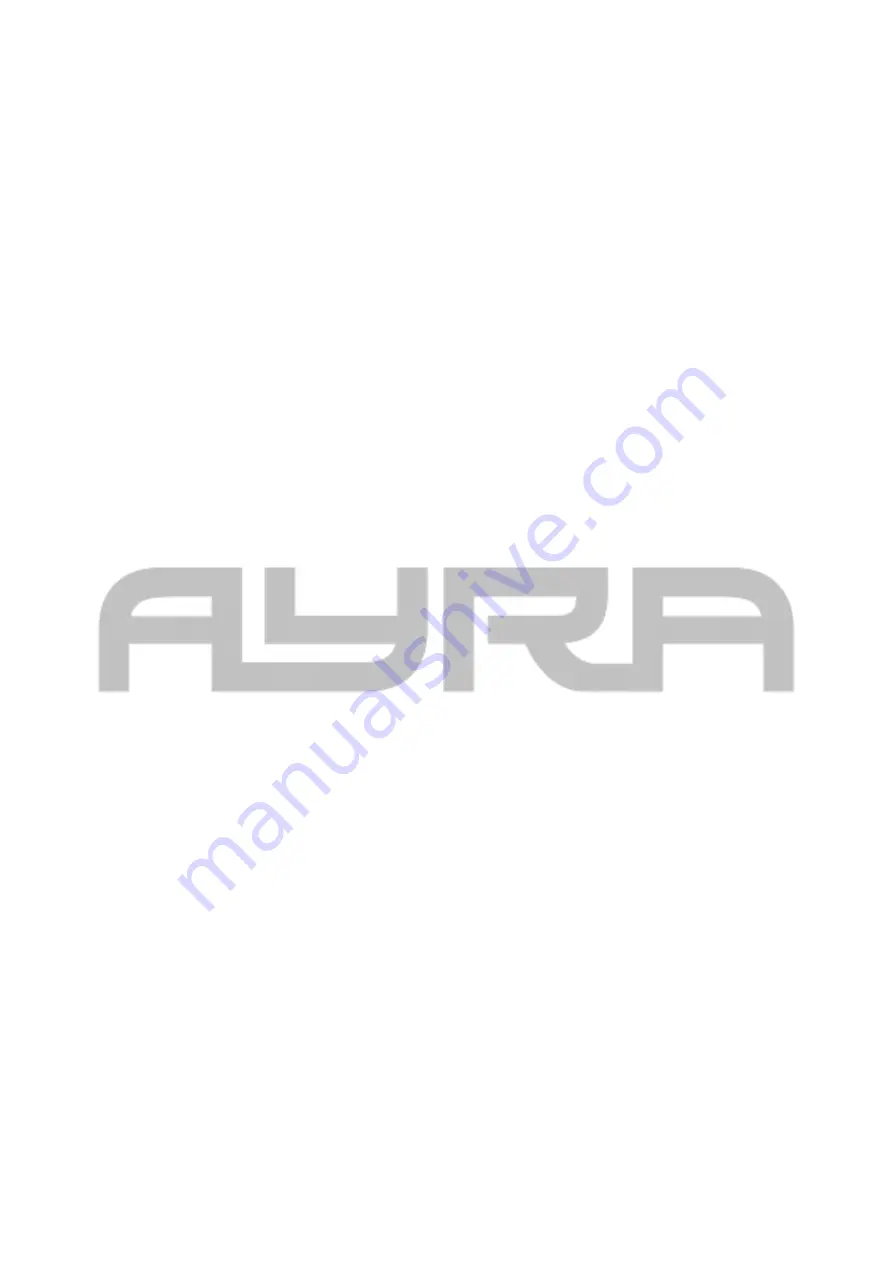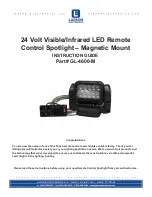
Installation and connection requirements
The Ayra LED Tri-Bar 12 is a versatile product and can be used in many ways. To use this device as
intended and to be sure that the product is used in a safe way, the following requirements must be met
during the setup, installation and connection of the device.
Standing installation
The LED Tri-Bar 12 comes with two small brackets, which make it possible to use the product in a horizontal,
standing position. Even though the stands are stable enough to keep the bar in this position, it is advised to
widen the stand surface for optimal stability, for example by mounting extra floor stands to the LED Tri-Bar 12
brackets. Alternatively, you can use bolts to anchor the bar to the floor. This is especially recommended
during use on stage, where artists, DJs and performers may accidentally kick the bar, thus making it fall over
during performance.
The height of the brackets allows for the use of standard power and XLR cables. It is possible to aim the light
beam straight forward, upward or anywhere in between. Loosen the tightening knobs to adjust the beam
angle and tighten them again to ensure the bar stays aimed in the desired position.
Suspended installation
The LED Tri-Bar 12 comes with two small brackets, which may be used for mobile or permanent installation
to a T-bar, truss setup, wall, ceiling, etc.
For suspended installation where the audience or performers can reach the direct environment of the bar, the
device must be securely mounted using the right hardware.
- For setups such as light stands (t-bars) and truss, the use of G-clamps and half couplers is advised.
- Other ways of installation, such as mounting the bar to a ceiling or wall, require special hardware. As the
construction materials may vary, it is recommended that you contact an expert to select the right mounting
equipment for the installation.
For every suspended installation, the LED Tri-Bar 12 needs to be secured using a proper safety cable. This
prevents the bar from falling if the primary hardware fails for any reason. A safety eyelet is available on the
unit. The safety cable must be able to hold at least 10 times the weight of the bar. Pay attention to the length
of the cable, which should be no longer than 1.2 times the minimum required length. A safety cable that is too
long allows the fixture fall and swing, thus creating additional force on the safety cable and possibly
damaging nearby objects.
Transport and storage
The Ayra LED Tri-Bar 12 can be transported directly after shut-down. As the 12 tri-LED light sources do not
need time to cool down, the device can be stored and transported instantly.
During transport, the device must be securely protected to ensure it stays reliable and in optimal shape.
Always use the original box and packaging material to transport the unit, or a fitting flight case or flight bag if
the device is transported frequently during mobile use.
Power input and output
The LED Tri-Bar 12 is equipped with a power input, as well as a power output (IEC C13/C14). This makes it
possible to daisy-chain both power and DMX for multiple LED Tri Bar 12 fixtures, which may be practical
during use on stage and prevents a cable mess.
Pay attention to the maximum total current of 10 A when using the power outputs. When daisy-chaining
several LED Tri-Bar 12 fixtures, the maximum on a single line should not be more than 25!
After 25 fixtures have been power daisy-chained, a new connection to a wall outlet must be made in order
not to exceed the 10A limit of the IEC C13/C14 connectors.
All information and illustrations shown in this user manual are subject to change without further notice.
User manual version: 1.0
Creation date + author initials: 02-02-2015 RV Revision date + author initials: 02-02-2015 RV



































